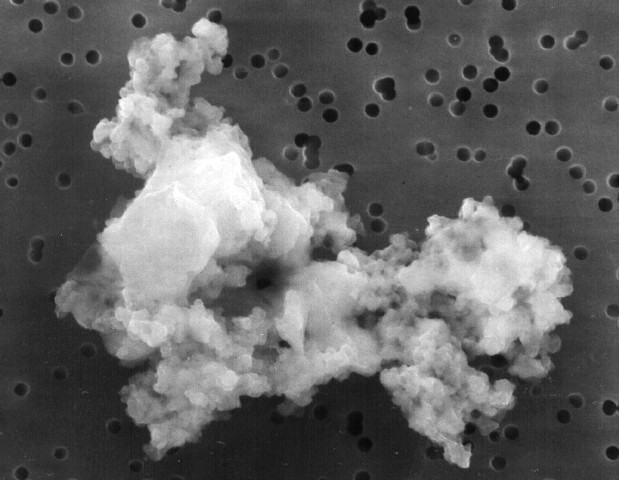A microscope view of a dust grain
The Universe is a very dusty place. Cosmic dust consists of tiny particles of solid material floating around in the space between the stars. It is not the same as the dust you find in your house but more like smoke with small particles varying from collections of just a few molecules to grains of 0.1 mm in size. Dust is important because we find lots of it around young stars. In fact it helps them to form, and it is also the raw material from which planets like the Earth are formed.
The diagram below illustrates the cosmic dust cycle. Dust is formed in stars and is then blown off in a slow wind or a massive star explosion. The dust is then ‘recycled’ in the clouds of gas between stars and some of it is consumed when the next generation of stars begins to form. Astronomers used to consider dust as a nuisance because it absorbs the visible light from objects, keeping them hidden from our optical telescopes making the Universe appear very dark and hiding a lot of interesting things from us. But these dusty clouds have silver linings, however. When astronomers started to use infrared cameras, they discovered that the annoying cosmic dust is actually very interesting and important to lots of astronomical processes. The dust converts the stolen starlight it absorbs into light at longer wavelengths. Astronomers can see the dust shining using special instruments sensitive to the far-infrared and submillimetre part of the electromagnetic spectrum. Herschel is designed to work at these wavelengths, and will be able to see the dust shining at temperatures between 8 and 100 K.


